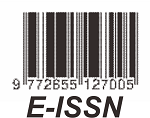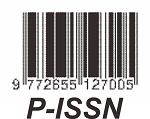ANALISIS ESTIMASI KEMAMPUAN SISWA DENGAN PENDEKATAN ITEM RESPONSE THEORY PENSKORAN DIKOTOMUS DAN POLITOMUS
DOI:
https://doi.org/10.46918/karst.v4i1.948Keywords:
kemampuan, Item Response Theory (IRT), dikotomus, politomusAbstract
This study compares students' abilities using the Item Response Theory (IRT) approach to dichotomous and polytomous scoring. This research is quantitative descriptive. The research subjects were 1175 high school students in class XI spread across West Java and Banten provinces, consisting of 450 male students and 725 female students. Response data with dichotomous scoring were analyzed using the item response theory approach with the BILOG-MG program, while the polytomous scoring was analyzed using the GPCM approach using the R program. The results of the model fit test showed that the items most fit with the 2PL model. The instrument used is a work and energy material test instrument tested for validity d, reliability, distinguishing power, and difficulty level. The results showed that the average ability with a polytomous score was greater than that of a dichotomous, even though compared to having almost the same ability but with a relatively different distribution. The distribution of students' abilities with polytomous scoring is closer to the normal curve than the dichotomous scoring. The relationship between students' ability scores with these two scoring approaches is shown by a correlation coefficient score of 0.990 and a determination index of 0.9808 with a prediction line y= 0.9735 x +0.0036.
Downloads
Published
Issue
Section
License
Karst : Jurnal Pendidikan Fisika dan Terapannya, adalah Jurnal Akses Terbuka (Open Access Journal). Penulis yang menerbitkan artikelnya dalam jurnal ini setuju dengan ketentuan berikut:

This work is licensed under a Creative Commons Attribution-ShareAlike 4.0 International License.
You are free to:
- Share — copy and redistribute the material in any medium or format
- Adapt — remix, transform, and build upon the material for any purpose, even commercially.
- Attribution — You must give appropriate credit, provide a link to the license, and indicate if changes were made. You may do so in any reasonable manner, but not in any way that suggests the licensor endorses you or your use.
- ShareAlike — If you remix, transform, or build upon the material, you must distribute your contributions under the same license as the original.
- No additional restrictions — You may not apply legal terms or technological measures that legally restrict others from doing anything the license permits.








94.jpg)

















